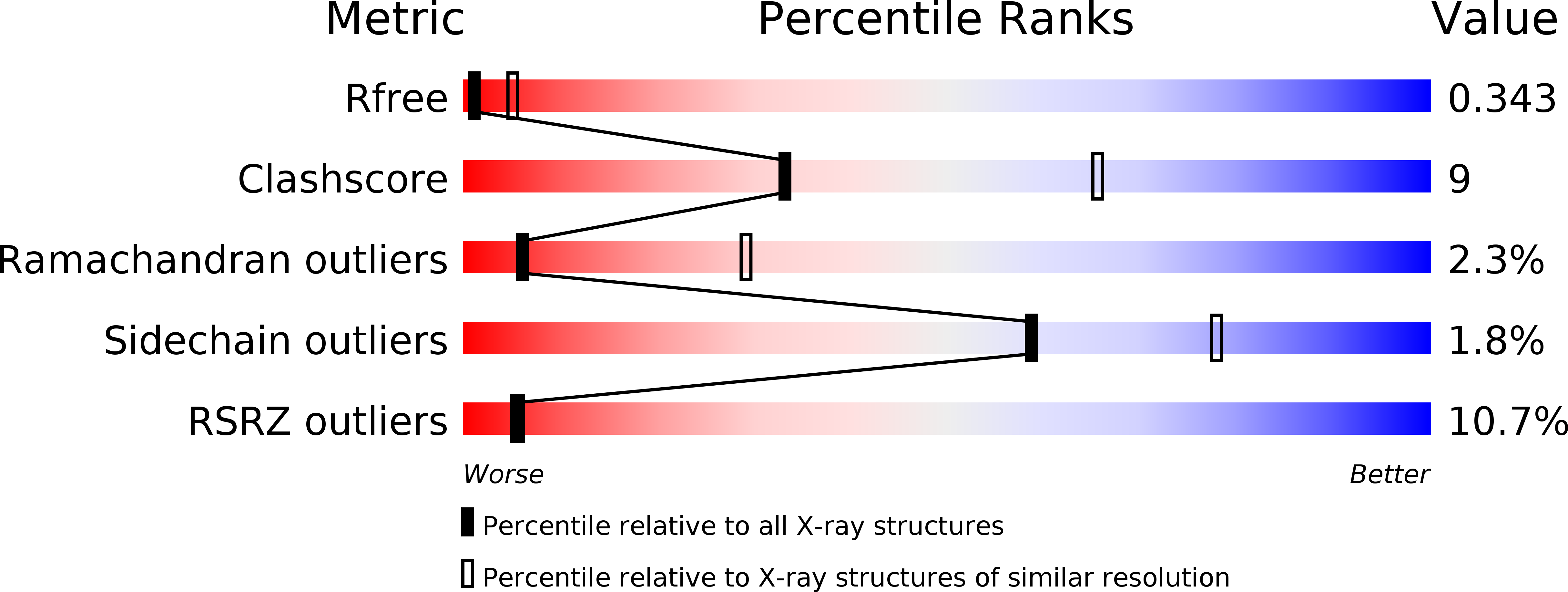
Deposition Date
2012-12-20
Release Date
2013-12-18
Last Version Date
2024-02-28
Entry Detail
PDB ID:
4IIA
Keywords:
Title:
Low resolution crystal structure of the NTF2-like domain of human G3BP1
Biological Source:
Source Organism:
Homo sapiens (Taxon ID: 9606)
Host Organism:
Method Details:
Experimental Method:
Resolution:
3.30 Å
R-Value Free:
0.35
R-Value Work:
0.30
R-Value Observed:
0.31
Space Group:
P 63 2 2


